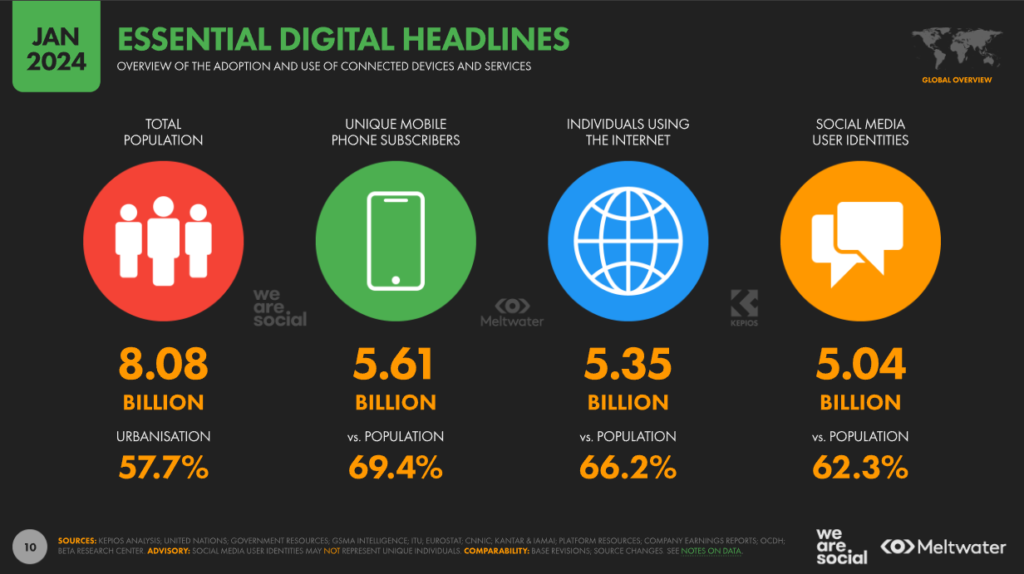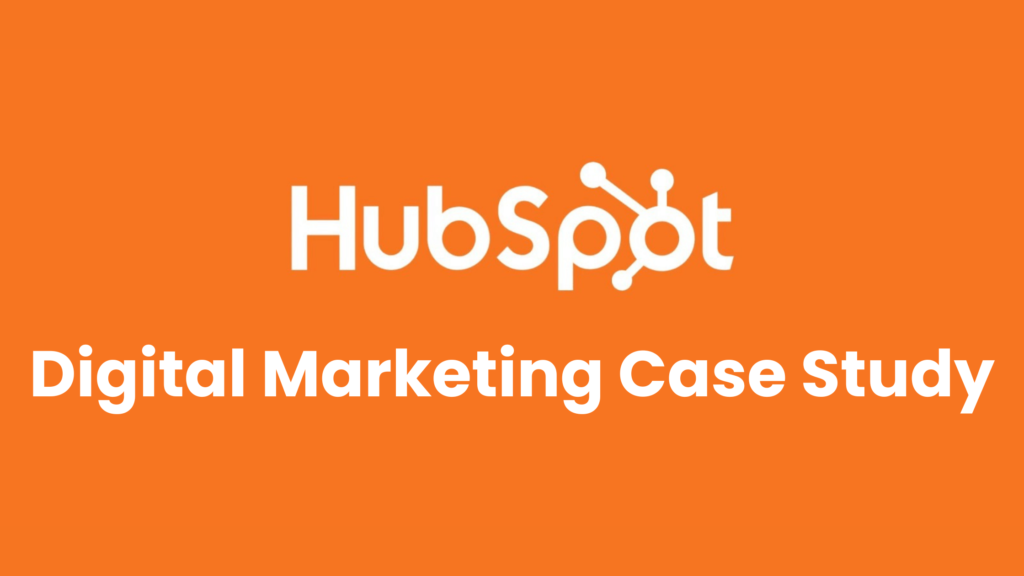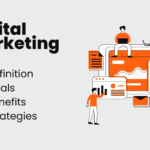What is Digital Marketing
Digital marketing encompasses all marketing efforts that use an electronic device or the internet. This broad approach includes various names such as online marketing, internet marketing, web marketing, and electronic marketing.
Businesses leverage digital channels such as search engines, social media, email, and other websites to connect with current and prospective customers. These channels provide a platform for digital media and content marketing, which are crucial for creating engaging and informative content that attracts and retains an audience.
Digital marketing extends beyond traditional marketing techniques by incorporating advanced technology to analyze the effectiveness of campaigns and understand consumer behavior. Tools and techniques used in digital advertising and online advertising allow businesses to track metrics such as click-through rates, conversion rates, and return on investment (ROI). This data-driven approach helps businesses refine their strategies and achieve better results.
Digital marketing is essential for businesses of all sizes. Digital marketing for businesses includes various services and solutions designed to meet the unique needs of different industries and markets. From small businesses to large corporations, digital marketing services provide the tools and expertise needed to succeed in a competitive digital landscape. These services can include everything from SEO and content creation to online advertising and social media management.
Digital marketing solutions are designed to help businesses achieve their marketing goals efficiently and effectively. These solutions often involve a combination of strategies and tactics tailored to the specific needs of the business. For example, a company may use web marketing to drive traffic to its website, while simultaneously running digital advertising campaigns to boost brand awareness and generate leads. By integrating these efforts, businesses can create a cohesive and comprehensive digital marketing strategy.
Understanding digital marketing basics is crucial for anyone looking to succeed in the digital age. This includes knowing how to use various digital channels, understanding the importance of analytics, and staying up-to-date with the latest trends and technologies. Digital marketing basics involve learning how to create compelling content, optimize websites for search engines, and engage with audiences on social media.
Today, most companies have shifted their focus to online digital marketing. This transition is largely driven by the success of tech giants like Google and Facebook, which generate more revenue than traditional media companies. The digital landscape offers unparalleled opportunities for targeted advertising, detailed analytics, and real-time engagement with consumers.
A significant factor in the shift to digital marketing is the widespread use of mobile devices. Mobile usage has skyrocketed, transforming the way people access information and interact with the world around them. Whether you are at the grocery store, a restaurant, or even a movie theater, one thing is common: people have their eyes glued to their phones.

Online advertisements have become the modern-day equivalent of billboards in this digital age. These mini billboards broadcast adverts every time we look something up on our phones.
9 Benefits of Digital Marketing
- Global Reach: Digital marketing breaks down geographical barriers, allowing businesses to reach potential customers all over the world. This is especially beneficial for businesses looking to expand their market and grow their customer base.
- Cost-Effective: Compared to traditional marketing methods, digital marketing can be more affordable and deliver higher returns on investment (ROI). Businesses can create targeted campaigns that reach the right audience at a fraction of the cost of traditional advertising.
- Targeted Advertising: Digital marketing tools enable businesses to target specific demographics, interests, and behaviors. This precision targeting ensures that marketing efforts are focused on the most relevant audience, increasing the likelihood of conversion.
- Measurable Results: One of the biggest advantages of digital marketing is the ability to track and measure results in real-time. Tools like Google Analytics and social media insights provide detailed metrics on campaign performance, allowing businesses to make informed decisions.
- Personalization: Digital marketing allows businesses to deliver personalized content and offers to their audience based on their preferences and behaviors. Personalization enhances the customer experience and can significantly increase engagement and conversions.
- Customer Engagement: Digital marketing channels such as social media, email, and live chat provide opportunities for businesses to engage with their customers in real-time. This interaction helps build stronger relationships and fosters customer loyalty.
- Improved Conversion Rates: Digital marketing techniques such as SEO, PPC, and email marketing drive targeted traffic to websites. High-quality traffic increases the likelihood of conversions, resulting in higher sales and revenue.
- Flexibility and Adaptability: Digital marketing campaigns can be quickly adjusted and optimized based on performance data. This flexibility allows businesses to respond to market changes and consumer behavior in real-time, ensuring maximum effectiveness.
- Brand Building: A consistent and strategic online presence helps businesses build and strengthen their brand identity. Digital marketing allows businesses to communicate their brand values, mission, and unique selling propositions to their audience, creating a strong brand image.
Main Types Of Digital Marketing Channels
The main channels of digital marketing include:
1. Search Engine Optimization (SEO)
Search engine optimization is an organic channel for traffic, SEO is the top digital marketing channel to get steady website visitors if done right.
SEO involves optimizing website content to rank higher in search engine results pages (SERPs). The goal is to increase organic traffic to the website by making it more visible to users searching for relevant keywords.
SEO strategies include on-page optimization (e.g., keyword research, meta tags, and content quality), off-page optimization (e.g., backlinks and social signals), and technical SEO (e.g., site speed, mobile-friendliness, and crawlability).
2. Email Marketing
Email marketing is a digital marketing channel that gives the biggest ROI (return on investment), integrating email marketing into your business.
Email marketing involves sending targeted emails to potential and existing customers to promote products, provide information, or build relationships.
Effective email marketing campaigns are personalized, relevant, and timely. They can include newsletters, promotional offers, product updates, and customer surveys. Automation tools can help streamline the process and ensure that emails reach the right audience at the right time.
3. Content Marketing
Content marketing is a digital marketing channel that became popular in the last 10 years, so many brands integrated this digital marketing channel.
Content marketing focuses on creating and distributing valuable, relevant, and consistent content to attract and retain a clearly defined audience.
The goal is to drive profitable customer action by providing content that educates, entertains, or informs. Common content types include blog posts, articles, infographics, videos, podcasts, and ebooks. Content marketing strategies should align with the overall business goals and target audience needs.
4. Affiliate Marketing
Affiliate Marketing is the oldest marketing channel that creates a network of people or businesses that promote your brand.
Affiliate marketing involves partnering with other businesses or individuals to promote products or services in exchange for a commission on sales.
Affiliates use various marketing channels such as blogs, social media, and email to drive traffic to the merchant’s website. This performance-based marketing strategy can help businesses reach new audiences and increase sales without a significant upfront investment.
5. Social Media Marketing
Social media marketing uses platforms like Facebook, Instagram, Twitter, LinkedIn, and Pinterest to promote products or services and engage with the audience.
Effective social media marketing strategies include creating engaging content, running targeted ads, and interacting with followers. Each platform has its unique features and audience, so businesses should tailor their approach accordingly.
6. Influencer Marketing
Influencer marketing involves collaborating with influencers to reach their followers and promote products or services. Influencers have built a loyal following on social media or other online platforms, and their recommendations can significantly impact their audience’s purchasing decisions.
Successful influencer marketing campaigns require identifying the right influencers, building authentic relationships, and creating compelling content.
Digital Marketing KPIs and Metrics
In the rapidly evolving digital landscape, measuring the effectiveness of marketing strategies is crucial for success. Key Performance Indicators (KPIs) and metrics are essential tools that help businesses gauge the performance of their digital marketing efforts.
This structured content explores the importance of digital marketing KPIs and metrics, their types, and how to effectively use them.
What are Digital Marketing KPIs and Metrics?
Key Performance Indicators (KPIs) are specific, quantifiable measures used to track the progress of a business’s marketing goals. They are aligned with strategic objectives and provide insights into the effectiveness of marketing campaigns.
Metrics are quantitative measures that provide data points used to evaluate performance. While KPIs are specific to strategic goals, metrics can be broader and provide detailed information about various aspects of marketing activities.
Importance of Digital Marketing KPIs and Metrics
- Measuring Success and ROI
- KPIs and metrics help businesses measure the success of their digital marketing strategies by tracking the return on investment (ROI). By evaluating the performance against predefined goals, companies can determine which strategies are most effective and provide the highest ROI.
- Data-Driven Decision Making
- Digital marketing KPIs and metrics provide valuable data that inform decision-making. Businesses can use this data to refine their strategies, allocate resources more effectively, and make informed decisions that drive better outcomes.
- Identifying Strengths and Weaknesses
- By analyzing KPIs and metrics, businesses can identify areas where their marketing efforts are performing well and areas that need improvement. This insight allows for targeted adjustments and optimization.
- Enhancing Customer Understanding
- Metrics such as customer engagement, conversion rates, and behavior analytics provide insights into customer preferences and behavior. This understanding helps businesses tailor their marketing strategies to better meet customer needs and improve satisfaction.
- Optimizing Marketing Strategies
- Continuous monitoring of KPIs and metrics enables businesses to test and optimize their marketing strategies. By understanding what works and what doesn’t, marketers can make real-time adjustments to improve performance.
- Tracking Progress Toward Goals
- KPIs are essential for tracking progress toward specific marketing goals. They provide a clear picture of how well strategies are performing and whether objectives are being met.
Types of Digital Marketing KPIs and Metrics
- Traffic Metrics
- Website Traffic: Measures the number of visitors to a website.
- Unique Visitors: Tracks the number of individual visitors to a site.
- Page Views: Counts the total number of pages viewed by visitors.
- Engagement Metrics
- Bounce Rate: Percentage of visitors who leave the site after viewing only one page.
- Average Session Duration: The average time visitors spend on the site.
- Pages Per Session: Average number of pages viewed per session.
- Conversion Metrics
- Conversion Rate: Percentage of visitors who complete a desired action (e.g., making a purchase, signing up for a newsletter).
- Cost Per Conversion (CPC): The cost associated with acquiring a new customer or lead.
- SEO Metrics
- Organic Search Traffic: The number of visitors who find a website through search engines.
- Keyword Rankings: Position of target keywords in search engine results pages (SERPs).
- Social Media Metrics
- Followers/ Likes: Number of people following a social media account.
- Engagement Rate: Interaction level on social media posts (likes, comments, shares).
- Email Marketing Metrics
- Open Rate: Percentage of recipients who open an email.
- Click-Through Rate (CTR): Percentage of recipients who click on links within an email.
How to Effectively Use KPIs and Metrics
- Align with Business Goals
- Ensure that KPIs and metrics are aligned with the overarching business goals and marketing objectives. This alignment ensures that measurements are relevant and meaningful.
- Set SMART Goals
- Establish Specific, Measurable, Achievable, Relevant, and Time-bound (SMART) goals for each KPI. Clear goals provide direction and focus for marketing efforts.
- Regular Monitoring and Analysis
- Continuously monitor and analyze KPIs and metrics to track progress and identify trends. Regular analysis helps in making timely adjustments to strategies.
- Use the Right Tools
- Utilize analytics tools such as Google Analytics, HubSpot, and social media insights to gather and analyze data. These tools provide comprehensive reports and insights.
- Benchmarking
- Compare performance against industry benchmarks and competitors. Benchmarking helps in understanding where your business stands and identifying areas for improvement.
- Iterate and Improve
- Use the insights gained from KPIs and metrics to refine and improve marketing strategies. Continuous iteration and optimization lead to better results over time.
Different Digital Marketing Strategies
A digital marketing strategy is a plan for leveraging digital marketing channels to achieve your business goals, the strategy differs depending on your digital marketing budget and goals.
Here are some strategies for different businesses:
Strategy for Small Businesses
Small businesses often have limited budgets and resources, so their digital marketing strategies should focus on cost-effective tactics that deliver high ROI.
Key strategies for small businesses include:
- Local SEO: Optimize the website for local search queries to attract nearby customers.
- Social Media Engagement: Build a strong presence on social media platforms where the target audience is active.
- Content Marketing: Create valuable content that addresses the needs and pain points of the target audience.
- Email Marketing: Use email campaigns to nurture leads and maintain customer relationships.
- Online Reviews: Encourage satisfied customers to leave positive reviews on platforms like Google My Business and Yelp.
Strategy for Startups
Startups need to overgrow and establish their brand in the market. Their digital marketing strategies should focus on rapid growth and visibility.
Key strategies for startups include:
- Growth Hacking: Use innovative and low-cost tactics to attract and retain customers quickly.
- SEO and Content Marketing: Invest in SEO and high-quality content to build organic traffic and establish authority.
- Social Media Advertising: Run targeted ads on social media platforms to reach a broader audience.
- Influencer Partnerships: Collaborate with influencers to increase brand awareness and credibility.
- Data-Driven Marketing: Use analytics to track performance and optimize campaigns for better results.
Strategy for Solopreneurs
Solopreneurs often wear many hats and have limited time to dedicate to marketing. Their digital marketing strategies should focus on efficiency and automation.
Key strategies for solopreneurs include:
- Personal Branding: Build a strong personal brand that resonates with the target audience
- Content Repurposing: Create content that can be repurposed across multiple channels to maximize reach.
- Automation Tools: Use tools to automate repetitive tasks such as email marketing, social media posting, and lead nurturing.
- Networking: Engage with online communities and forums to build relationships and gain visibility.
- Strategic Partnerships: Collaborate with other solopreneurs or small businesses to cross-promote products or services.
Successful Digital Marketing Campaigns: Case Studies
To grasp the information in this guide, let’s see successful digital marketing campaigns that shaped the digital marketing landscape.
Dollar Shave Club’s Digital Marketing Success:
Dollar Shave Club (DSC) revolutionized the men’s grooming market with its disruptive subscription model. Launched in 2011, DSC’s innovative digital marketing strategy played a pivotal role in its rapid growth and ultimate acquisition by Unilever for $1 billion in 2016. This case study explores DSC’s digital marketing efforts and the principles behind their success.

1. Viral Video Marketing
Key Campaign: “Our Blades Are F*ing Great”**
- Launch: March 2012
- Impact: The video went viral almost immediately, garnering over 12,000 orders in the first 48 hours and 4.75 million views in three months.
- Content: The video featured DSC’s CEO, Michael Dubin, delivering a humorous, no-nonsense pitch about the simplicity and affordability of their razors.
- Strategy: Leveraging humor and a direct approach, the video created a memorable brand identity that resonated with consumers frustrated by the high cost and complexity of purchasing razors from traditional retailers.
2. Content Marketing
Blog and Email Marketing
- Content: DSC maintained an engaging blog and email newsletter, providing grooming tips, lifestyle content, and updates about their products.
- Engagement: DSC fostered a loyal community and kept customers engaged by offering valuable content beyond their products.
3. Social Media Marketing
Platforms: Facebook, Instagram, Twitter, and YouTube
- Approach: DSC used a consistent brand voice characterized by humor and relatability. They posted regular updates, interacted with customers, and used user-generated content to build community.
- Advertising: Paid social media ads were targeted to specific demographics, maximizing reach and engagement. Their ads often highlighted the convenience and value of their subscription model.
4. SEO and SEM
Search Engine Optimization (SEO)
- Strategy: DSC optimized its website content for relevant keywords like “affordable razors” and “shave club,” ensuring they ranked high in organic search results.
Search Engine Marketing (SEM)
- Google Ads: They invested in Google Ads to capture intent-driven traffic, ensuring visibility to potential customers actively searching for grooming solutions.
5. Influencer and Affiliate Marketing
Influencer Partnerships
- Collaborations: DSC partnered with influencers and bloggers to reach wider audiences. These influencers provided authentic reviews and endorsements, enhancing DSC’s credibility and appeal.
Affiliate Marketing
- Programs: They established affiliate programs where partners earned commissions on sales referred through their networks, expanding their reach without significant upfront costs.
6. Customer Experience and Personalization
User-Friendly Website
- Design: DSC’s website was simple, intuitive, and optimized for conversions. The subscription process was straightforward, minimizing friction for new users.
Personalization
- Experience: DSC used data to personalize customer experiences, offering tailored recommendations and communications based on individual preferences and behaviors.
7. Analytics and Data-Driven Decisions
Insights:
- Tools: DSC utilized analytics tools to track campaign performance, customer behavior, and conversion rates.
- Adjustments: Continuous data analysis allowed them to refine their strategies, optimize ad spend, and improve customer retention.
Results:
Growth and Acquisition
- Rapid Growth: By 2016, DSC had 3.2 million subscribers and generated $200 million in annual revenue.
- Acquisition: In 2016, Unilever acquired DSC for $1 billion, highlighting the immense value generated through its innovative digital marketing efforts.
HubSpot’s Digital Marketing Success

HubSpot, a leading provider of inbound marketing, sales, and customer service software, has set the standard for digital marketing in the Software as a Service (SaaS) industry. This case study examines how HubSpot utilized inbound marketing to achieve significant growth, attract and retain customers, and establish itself as a market leader.
Overview
Company: HubSpot
Industry: SaaS
Founded: 2006
Product: Marketing, Sales, and Customer Service Software
Key Digital marketing channels: Content Marketing, SEO, Email Marketing, Influencer and Affiliate Marketing
Objectives
- Increase brand awareness
- Generate high-quality leads
- Nurture and convert leads into customers
- Retain existing customers and reduce churn
- Position HubSpot as a thought leader in the marketing automation space
Hubspot’s Digital Marketing Strategies
1. Content Marketing
Blogging
- Strategy: HubSpot launched an extensive blog that provides valuable content on various topics related to marketing, sales, and customer service.
- Execution: Regularly published articles, how-to guides, and industry insights.
- Result: The blog became a top resource for marketers, driving significant organic traffic and generating leads.
E-books and Whitepapers
- Strategy: Created in-depth e-books and whitepapers on key topics.
- Execution: Offered these resources for free in exchange for contact information, generating high-quality leads.
- Result: Established HubSpot as an authority in the industry and built a large email list for nurturing leads.
Webinars and Videos
- Strategy: Hosted webinars and created video content on various marketing and sales topics.
- Execution: Provided live and on-demand access to educational webinars.
- Result: Engaged prospects and customers, increasing lead conversion rates and customer retention.
2. SEO and SEM
Search Engine Optimization (SEO)
- Strategy: Focused on optimizing their website and content for relevant keywords.
- Execution: Implemented on-page SEO techniques, built backlinks, and created SEO-optimized content.
- Result: Achieved high rankings on search engines for critical keywords, driving organic traffic.
Search Engine Marketing (SEM)
- Strategy: Used paid search ads to capture high-intent traffic.
- Execution: Ran Google Ads campaigns targeting keywords related to marketing automation and SaaS solutions.
- Result: Increased visibility and attracted high-quality leads ready to convert.
3. Social Media Marketing
Platforms: LinkedIn, Twitter, Facebook, Instagram, YouTube
- Strategy: Leveraged social media to distribute content, engage with followers, and run targeted ad campaigns.
- Execution: Posted regular updates, engaged with followers, and used social media ads to promote content and webinars.
- Result: Built a strong social media presence, increased brand awareness, and drove traffic to their website.
4. Email Marketing
Lead Nurturing
- Strategy: Implemented an email marketing strategy to nurture leads through the sales funnel.
- Execution: Sent personalized emails based on user behavior and interests.
- Result: Improved lead conversion rates and shortened the sales cycle.
Customer Retention
- Strategy: Used email marketing to retain existing customers and reduce churn.
- Execution: Sent regular updates, product tips, and personalized offers to customers.
- Result: Increased customer satisfaction and retention rates.
5. Influencer and Affiliate Marketing
Influencer Collaborations
- Strategy: Partnered with industry influencers to expand reach and credibility.
- Execution: Collaborated on webinars, guest blog posts, and social media promotions.
- Result: Leveraged influencer audiences to drive traffic and generate leads.
Affiliate Marketing
- Strategy: Established an affiliate program to incentivize partners to promote HubSpot.
- Execution: Offered commissions to affiliates for every lead or customer they referred.
- Result: Expanded reach and generated additional leads through affiliate marketing.
Results
- Traffic and Leads: HubSpot’s blog attracts millions of visitors annually, generating thousands of leads each month.
- Customer Growth: HubSpot has grown its customer base to over 100,000 customers in more than 120 countries.
- Revenue Growth: Significant year-over-year revenue growth, culminating in a successful IPO in 2014.
- Industry Leadership: Positioned as a thought leader in the inbound marketing and SaaS industry.
Advanced Digital Marketing Techniques
AI and Machine Learning in Digital Marketing
Artificial intelligence (AI) and machine learning transform digital marketing by enabling more precise targeting, personalization, and automation. Key applications include:
- Predictive Analytics: Using data to predict future customer behavior and tailor marketing strategies accordingly.
- Chatbots: Implementing AI-powered chatbots to provide instant customer support and engage with website visitors.
- Personalization: Leveraging machine learning algorithms to deliver personalized content and product recommendations.
- Automation: Automating repetitive tasks such as email marketing, social media posting, and ad management.
Voice Search Optimization
Voice search is becoming increasingly popular with the rise of smart speakers and virtual assistants. Optimizing for voice search involves:
- Natural Language Processing: Understanding how people phrase their queries when using voice search and incorporating those phrases into content.
- Local SEO: Optimizing for local search queries as many voice searches are location-based.
- Structured Data: Using schema markup to help search engines understand and display content more effectively in voice search results.
Video Marketing Strategies
Video marketing is a powerful tool for engaging audiences and driving conversions. Effective video marketing strategies include:
- Storytelling: Creating compelling stories that resonate with the audience and convey the brand message.
- Live Streaming: Using live video to connect with the audience in real time and provide an interactive experience.
- Product Demos: Showcasing products through detailed demonstrations to help customers make informed purchasing decisions.
- Tutorials and How-To Videos: Providing valuable information and solving problems for the audience through educational videos.
Emerging Trends in Digital Marketing
Latest Digital Marketing Trends
Staying updated with the latest trends is crucial for digital marketing success. Current trends include:
- Artificial Intelligence: Leveraging AI for better targeting, personalization, and automation.
- Voice Search: Optimizing content for voice search to capture a growing segment of users.
- Video Content: Creating more video content to engage audiences and drive conversions.
- Influencer Marketing: Partnering with influencers to reach new audiences and build credibility.
- Interactive Content: Using interactive content such as quizzes, polls, and surveys to engage users and collect valuable data.
Conclusion
Digital marketing is a dynamic and multifaceted field that leverages various online channels and strategies to reach and engage audiences. Understanding the semantics of language plays a crucial role in creating effective digital marketing campaigns. By applying principles of micro semantics and lexical semantics, marketers can enhance their content, optimize for search engines, and provide a better user experience. Staying informed about the latest trends and continuously refining strategies is key to success in the ever-evolving digital marketing landscape.




